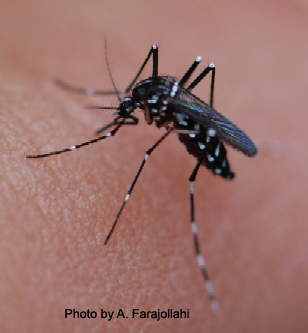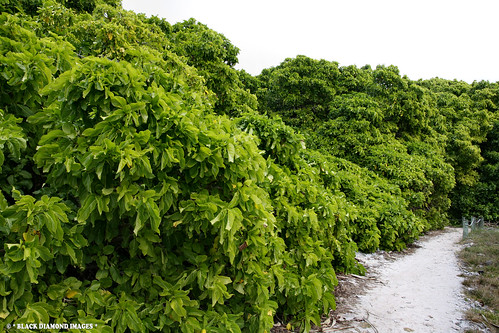In my previous two pieces on the impact of invasive species on agriculture, some examples of invader facilitated diseases cropped up (no pun intended...). This got me thinking, if invasive species can cause ailments to our
farming activities, can they have direct negative effects on humans too?
I knew that mosquitoes cause diseases like malaria and dengue fever. I also knew that with changes in climate, their distributions are changing. So, I figured it was worth investigating further... with emphasis on Europe, so it has some 'closer to home' relevance.
Mozzies are vectors for a number of diseases including yellow fever, dengue fever, malaria and chikungunya
(Akbari et al., 2013). Picking out dengue specifically, approximately 2.5 billion people worldwide are at risk, with approximately 25000 deaths a year
(Guzman and Isturiz, 2010).
Aedes aegypti is the principal species facilitating Dengue spread
(Halstead, 2008) and it's also responsible for outbreaks of chikungunya
(Ligon, 2006). It is native to tropical Africa
(Braks et al., 2004) but expanding in range, with Dengue occurrence closely following this expansion
(Guzman et al., 2010).
 |
| A female Aedes aegypti, you don't want to encounter one... |
In October 2012,
Aedes aegypti was implicated in a large outbreak of Dengue fever in Madeira, Portugal
(Sousa et al., 2012). By early 2013, more than 2000 cases had been reported
(ECDC, 2013).
 |
| Notified dengue fever cases by week, Madeira, Portugal, 3 October - 25 November 2012. Source: Sousa et al., (2013) |
So, maybe soon we'll need vaccinations before we go on holiday to some of Southern Europe? And I can't see 'Sun, Sea and Possible Chances of Deadly Diseases' catching on in travel brochures anytime soon...
Another concern is the Asian Tiger Mosquito,
Aedes albopictus, an aggressive species with vectorial capacity for a number of nasty aforementioned diseases.
It is native to East Asia, but is expanding globally at a rapid rate, having colonised every continent bar Antarctica in the past 40 years
(Bonizzoni et al., 2013). In the last 10 years the species has been the principal cause of Dengue and Chikungunya outbreaks in Hawaii, Central Africa, southern China and now, Europe too
(Bonizzoni et al., 2013). Quite a spread, I'm sure you'd agree.
 |
| Aedes Albopictus: currently the most invasive vector species worldwide (Bonnizoni et al., 2013). |
|
|
Focusing specifically on Europe again, the Tiger Mosquito was first recorded in Albania in 1979. It's now present in all Mediterranean countries and is moving north to countries including Belgium
(Bonizzoni et al., 2013).
The Tiger Mosquito was the cause of the first notable invasive mosquito-borne disease outbreak in Europe. In the summer of 2007 in Ravenna, Italy, more than 200 cases of chikungunya were reported
(Angelini et al., 2007).
It's globetrotting nature presents a threat. Between 1990 - 2013, the number of people living in countries with Tiger Mosquito presence has increased from 3.2 - 5.1 billion. The species is highly adaptable ecologically, can transmit many pathogens and is happy in both urban or rural locations. So, it's not just a globetrotter, it's also cosmopolitan. That could be an issue...
 |
| Global distribution of Aedes albopictus, now available in Western Europe! Source: Bonizzoni et al (2013). |
Concerns over mosquitoes are rising as they have spread considerably since 1990
(Schaffner et al., 2013). Changes in weather patterns and land cover are known to impact vector borne disease transmission
(Vanwembeke and Lambin, 2006). Climate change could also facilitate higher mosquito densities and spreads beyond current boundaries.
However, the principal driving forces for the spread of mosquito borne diseases have been anthropogenically driven, due to globalisation and inefficient public health measures
(Schaffner et al., 2013).
On the other hand, it is worth pointing out that other invasive mosquitoes such as
Aedes Atropalpus and
Aedes koreicus currently represent very low threats to European public health
(Schaffner et al., 2013).
 |
| Aedes Atropalpus: not as much of a health concern. |
Generally though, given these developments, mosquito surveillance is now essential to detect early invader presence and prepare for control of disease outbreaks
(ECDC, 2012). Early eradications have been achieved for certain mozzies in France, Italy and the Netherlands
(Schaffner et al., 2013).
Another invader I came across with the potential to inflict disease upon humans was
Nyctereutes procyonoides, or, as we more commonly know it, the raccoon dog. Historically, it was restricted to the Far East, however, it now has a presence in much of northern and eastern Europe, with potential to expand further
(Kauhala and Saeki, 2004).
 |
| The Raccoon Dog's native range (blue) and invaded areas (red). |
The danger posed by raccoon dogs is their ability to transmit the potentially lethal viruses to humans, including rabies. In fact, as many as 55,000 humans are killed by rabies every year. The concern in Europe is that the racoon's flexible habitat use, high offspring numbers and large dispersal potential could lead to high population densities
(Sutor et al., 2013).
 |
| Raccoon dogs, cute but be careful. |
However, it should be pointed out that countries such as Finland and Germany have raccoon dog presence, but are also rabies free. And more generally, it seems the raccoon dog poses greater threats to wildlife than to humans in Europe. So I don't think we need to worry about large quantities of people foaming at the mouth anytime soon.
To conclude, there is ample evidence that we should be concerned about the impacts of invasive species with regard to human health, particularly concerning certain species of mosquitoes. The growing threat is entwined with global environmental change, anthropogenic and 'natural', as this is permitting the spread of the potential disease inflictors. Should we be concerned? I'd have to say yes, and if we're aware of the threat now, it should help mitigate the effects in the future.














































_on_Kapok_(Ceiba_pentandra)_in_Kolkata_W_IMG_4297.jpg)



